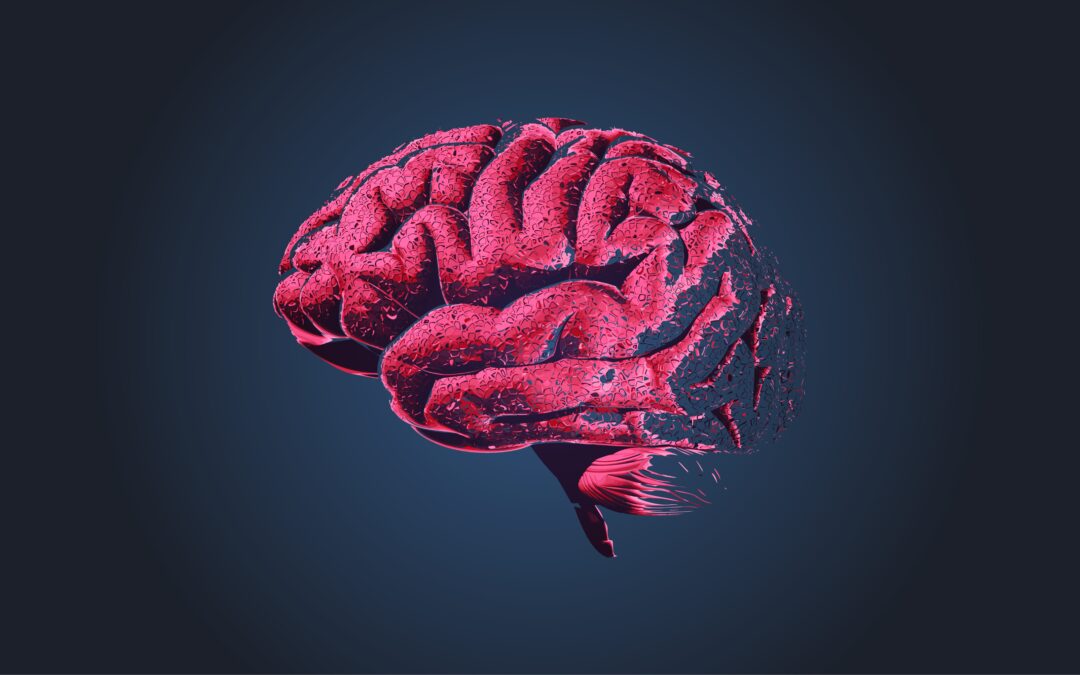HIV-associated neurocognitive disorders (HAND) remain a significant concern for people living with HIV (PLWH), even in the era of combination antiretroviral therapy (cART). Despite the effectiveness of modern treatments in suppressing viral loads and improving overall health outcomes, the prevalence of HAND persists, affecting up to 50% of adults living with HIV (Saylor et al., 2016). The landscape of HAND has shifted dramatically since the introduction of cART in 1996, with a notable decrease in the severity of neurological impairments but a steady frequency of occurrence (Nightingale et al., 2014).
Before the advent of cART, many HIV patients in the final stages of the disease developed severe neurological impairments collectively known as AIDS dementia complex (ADC). The introduction of effective antiretroviral treatment marked a turning point in HIV care, significantly reducing the incidence of severe forms of HAND. However, the prevalence of milder forms has increased, presenting new challenges for diagnosis and management (Heaton et al., 2010).
The current classification of HAND, as defined by the Frascati criteria, comprises three degrees of severity: HIV-associated asymptomatic neurocognitive impairment (ANI), HIV-associated mild neurocognitive disorder (MND), and HIV-associated dementia (HAD) (Antinori et al., 2007). This classification system was developed to better differentiate between demented and non-demented forms of the disease, reflecting the epidemiological shift towards milder cognitive impairments in the cART era.
The diagnosis of HAND is based on the evaluation of key cognitive domains, including executive functioning, episodic memory, motor skills, speed of information processing, language, working memory, and sensory perception. The Frascati criteria also consider the extent to which cognitive impairment impacts a person’s performance on activities of daily living (Antinori et al., 2007). For ANI diagnosis, a patient should score at least one standard deviation below normative data in at least two of five cognitive domains, without interference in daily functioning. MND requires similar cognitive impairment but with affected everyday functioning. HAD diagnosis necessitates impaired performance of two standard deviations below normative data in at least two cognitive areas, with marked functional impairment (Nightingale et al., 2014).
The persistence of milder forms of HAND in the cART era is attributed to various factors, including poor adherence to treatment, possible neurotoxicity of antiretroviral drugs, multiple co-morbidities, drug resistance, low educational achievement, irreversible CNS injury before ART initiation (the “legacy effect”), poor CNS penetration of some antiretroviral drugs, and chronic HIV brain infection (Saylor et al., 2016). These factors underscore the complex nature of HAND and the challenges in its management.
Early detection and diagnosis of HAND are crucial for optimal patient care and outcomes. Screening and early diagnosis are essential to minimize the progression of ANI and MND to HAD, at which point there is a lower chance of complete recovery, even after ART is initiated or modified. Accurate detection is critical for the therapeutic and clinical management of PLWH with HAND, particularly for milder forms of cognitive impairment (Nightingale et al., 2014).
A cost-effective strategy for HAND detection involves an initial brief screening test, followed by a comprehensive neuropsychological evaluation in individuals with an impaired screen. However, this approach is only useful if the screening test can detect at least mild HAND with good sensitivity and specificity (Kamminga et al., 2013). The challenge lies in developing and validating screening tools that are both sensitive and specific, particularly for milder forms of HAND.
Several screening tools have been developed and evaluated for their effectiveness in detecting HAND. The International HIV Dementia Scale (IHDS) is one of the most frequently used tools, particularly in resource-limited settings. A meta-analysis by Haddow et al. (2013) found that the IHDS had a pooled sensitivity of 62% and specificity of 76% for detecting HAND. While its brevity makes it practical for routine screening, its moderate sensitivity suggests it may miss milder forms of cognitive impairment.
The HIV Dementia Scale (HDS) is another commonly used tool that has shown good performance in detecting HIV-associated dementia. Sacktor et al. (2005) reported a sensitivity of 80% and specificity of 91% for detecting HAD using the HDS. However, its effectiveness for milder forms of HAND is limited, with sensitivity dropping to 54% for mild neurocognitive disorder (Skinner et al., 2009).
The Montreal Cognitive Assessment (MoCA) has shown promise, especially when combined with other tests. Koski et al. (2011) found that the MoCA had a sensitivity of 72% and specificity of 67% for detecting HAND. Its balanced sensitivity and specificity make it a useful tool for general cognitive screening in PLWH.
Newer tools, such as the tablet-based NeuroScreen, have shown significant potential for HAND screening. Robbins et al. (2018) reported a sensitivity of 93% and specificity of 81% for detecting HAND using NeuroScreen in a South African cohort. The digital format of NeuroScreen allows for standardized administration and easy data collection, making it promising for both clinical and research settings.
Recent research suggests that combining brief tests may improve screening accuracy. Joska et al. (2016) found that combining the IHDS with the Cognitive Assessment Tool-Rapid version (CAT-rapid) showed excellent sensitivity (89%) and specificity (82%) for HIV-associated dementia. This approach of using multiple screening tools in combination may offer a more comprehensive assessment of cognitive function in PLWH.
Despite these advances in screening tools, challenges remain in the accurate detection of HAND, particularly its milder forms. Most screening tools perform well in detecting severe forms of HAND but lack sensitivity and specificity for milder cognitive impairments. This limitation is particularly problematic given the shift towards milder forms of HAND in the cART era.
The impact of HAND on the quality of life of PLWH cannot be overstated. Cognitive impairment can affect medication adherence, employment, and overall functional status. Some studies have reported that PLWH over the age of 50 have a 7-fold higher odds of developing mild cognitive impairment compared to HIV-negative individuals of the same age (Nightingale et al., 2014). This highlights the importance of considering age as a factor in HAND screening and management.
Several factors have been identified that influence cognitive function in PLWH. Age is a significant factor, with older PLWH at higher risk of cognitive impairment as HIV infection and aging independently contribute to cognitive decline. A history of low CD4 count (nadir CD4) is associated with increased risk of cognitive impairment, even after initiation of ART. Effective ART and viral suppression are generally protective against cognitive decline but do not completely eliminate the risk of HAND. Comorbidities such as cardiovascular disease, diabetes, and hepatitis C can also contribute to cognitive impairment in PLWH (Saylor et al., 2016).
The pathophysiology of HAND is complex and multifactorial. HIV enters the central nervous system (CNS) early during primary infection, leading to persistent viral replication and chronic inflammation within the brain. The release of viral proteins, such as gp120 and Tat, as well as pro-inflammatory cytokines, chemokines, and oxidative stress mediators, leads to chronic neuroinflammation and activation of immune cells, including microglia and astrocytes (Saylor et al., 2016).
Emerging research has focused on developing more sensitive and specific screening tools for HAND, as well as exploring interventions to prevent or ameliorate cognitive decline in PLWH. The BRACE (Brain Baseline Assessment of Cognition and Everyday Functioning) tool, an iPad-based cognitive assessment, has shown promise in initial evaluations. Speed of Processing (SOP) training has demonstrated potential benefits in cognitive performance for PLWH.
Studies from the RV254 Thai acute HIV infection cohort suggest that very early initiation of ART may lead to more favorable neurological outcomes and reduced risk of cognitive impairment (Ananworanich et al., 2016). This highlights the potential importance of early HIV diagnosis and treatment initiation in preserving cognitive function.
Neuroimaging techniques are also being explored as potential tools for early detection and monitoring of HAND. Advanced imaging techniques such as functional MRI and MR spectroscopy are providing new insights into the neuropathological substrates of HAND and may help identify early markers of cognitive decline (Ances et al., 2012).
In conclusion, while the landscape of HAND has changed significantly with the advent of effective antiretroviral therapy, cognitive impairment remains a significant concern for people living with HIV. The shift towards milder forms of HAND presents new challenges for diagnosis and management. Ongoing research is focused on developing more sensitive screening tools, understanding the underlying mechanisms of HAND, and exploring interventions to prevent or mitigate cognitive decline in this population.
The choice of screening tool may depend on the specific clinical setting, available resources, and the population being assessed, with comprehensive neuropsychological testing remaining the gold standard for diagnosing HAND. As research progresses, a more nuanced understanding of HAND and improved strategies for its detection and management are likely to emerge, potentially leading to better outcomes for people living with HIV.
References
Ances, B. M., Ortega, M., Vaida, F., Heaps, J., & Paul, R. (2012). Independent effects of HIV, aging, and HAART on brain volumetric measures. Journal of Acquired Immune Deficiency Syndromes, 59(5), 469-477.
Ananworanich, J., Chomont, N., Eller, L. A., Kroon, E., Tovanabutra, S., Bose, M., … & RV254/SEARCH 010 Study Group. (2016). HIV DNA set point is rapidly established in acute HIV infection and dramatically reduced by early ART. EBioMedicine, 11, 68-72.
Antinori, A., Arendt, G., Becker, J. T., Brew, B. J., Byrd, D. A., Cherner, M., … & Wojna, V. E. (2007). Updated research nosology for HIV-associated neurocognitive disorders. Neurology, 69(18), 1789-1799.
Haddow, L. J., Floyd, S., Copas, A., & Gilson, R. J. (2013). A systematic review of the screening accuracy of the HIV Dementia Scale and International HIV Dementia Scale. PLoS One, 8(4), e61826.
Heaton, R. K., Clifford, D. B., Franklin, D. R., Woods, S. P., Ake, C., Vaida, F., … & CHARTER Group. (2010). HIV-associated neurocognitive disorders persist in the era of potent antiretroviral therapy: CHARTER Study. Neurology, 75(23), 2087-2096.
Joska, J. A., Witten, J., Thomas, K. G., Robertson, C., Casson-Crook, M., Roosa, H., … & Sacktor, N. (2016). A comparison of five brief screening tools for HIV-associated neurocognitive disorders in the USA and South Africa. AIDS and Behavior, 20(8), 1621-1631.
Kamminga, J., Cysique, L. A., Lu, G., Batchelor, J., & Brew, B. J. (2013). Validity of cognitive screens for HIV-associated neurocognitive disorder: a systematic review and an informed screen selection guide. Current HIV/AIDS Reports, 10(4), 342-355.
Koski, L., Brouillette, M. J., Lalonde, R., Hello, B., Wong, E., Tsuchida, A., & Fellows, L. K. (2011). Computerized testing augments pencil-and-paper tasks in measuring HIV-associated mild cognitive impairment. HIV Medicine, 12(8), 472-480.
Nightingale, S., Winston, A., Letendre, S., Michael, B. D., McArthur, J. C., Khoo, S., & Solomon, T. (2014). Controversies in HIV-associated neurocognitive disorders. The Lancet Neurology, 13(11), 1139-1151.
Robbins, R. N., Gouse, H., Brown, H. G., Ehlers, A., Scott, T. M., Leu, C. S., … & Joska, J. A. (2018). A mobile app to screen for neurocognitive impairment: preliminary validation of NeuroScreen among HIV-infected South African adults. JMIR mHealth and uHealth, 6(1), e5.
Sacktor, N. C., Wong, M., Nakasujja, N., Skolasky, R. L., Selnes, O. A., Musisi, S., … & Katabira, E. (2005). The International HIV Dementia Scale: a new rapid screening test for HIV dementia. AIDS, 19(13), 1367-1374.
Saylor, D., Dickens, A. M., Sacktor, N., Haughey, N., Slusher, B., Pletnikov, M., … & McArthur, J. C. (2016). HIV-associated neurocognitive disorder—pathogenesis and prospects for treatment. Nature Reviews Neurology, 12(4), 234-248.
Skinner, S., Adewale, A. J., DeBlock, L., Gill, M. J., & Power, C. (2009). Neurocognitive screening tools in HIV/AIDS: comparative performance among patients exposed to antiretroviral therapy. HIV Medicine, 10(4), 246-252.

I am an experimental psychologist and cognitive neuroscientist at Birkbeck, University of London, researching the architecture of working memory and the design of interventions to support cognitive health across the lifespan. With over fifteen years of research and applied practice, I specialise in clinical and neurocognitive health, women’s mental health, and cognitive ageing. My work combines neuroscience and digital innovation through NeuxScience, a SaaS platform I developed that delivers adaptive cognitive training and neurocognitive testing powered by machine learning. I am deeply committed to evidence-based, inclusive mental health practice and to making cognitive science accessible and useful beyond academia. Outside of research, I’m a mother to three boys, four dogs, and five cats.

